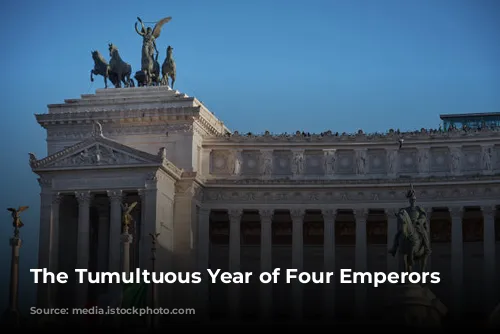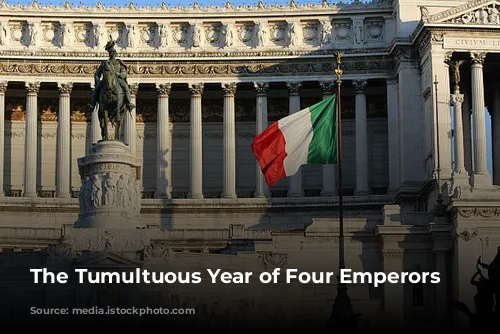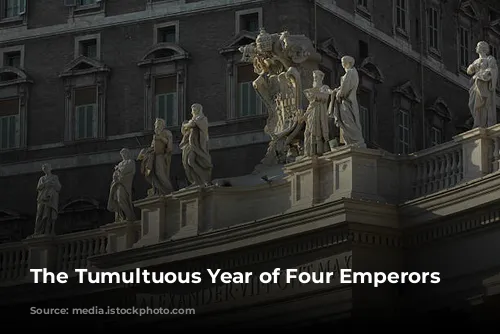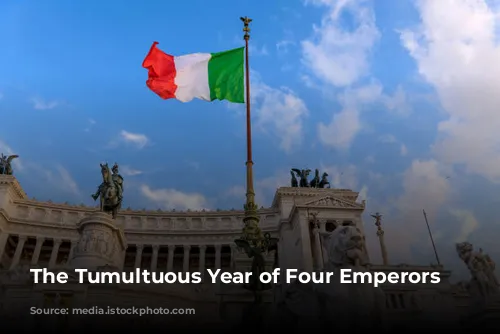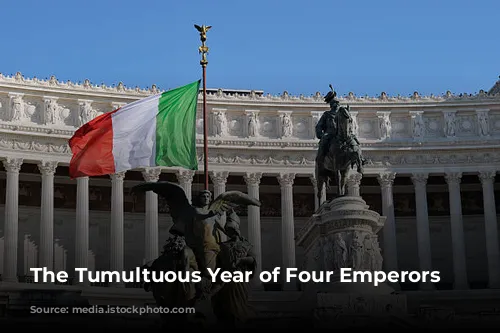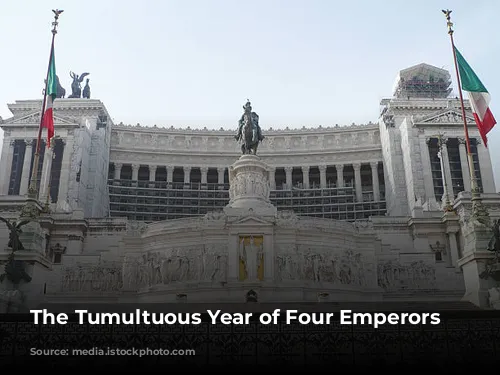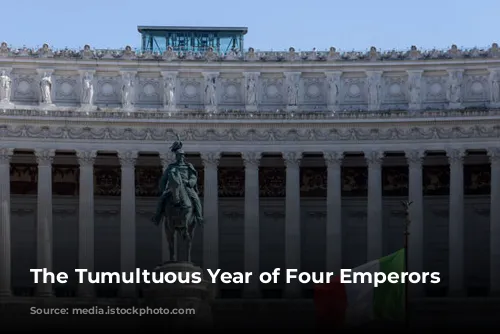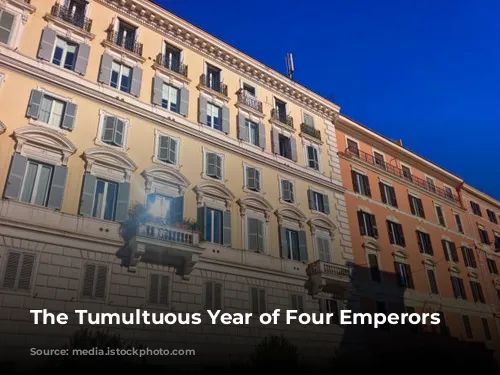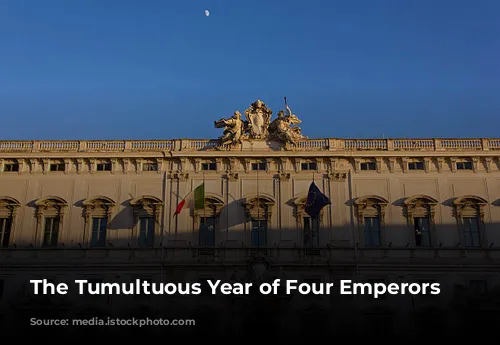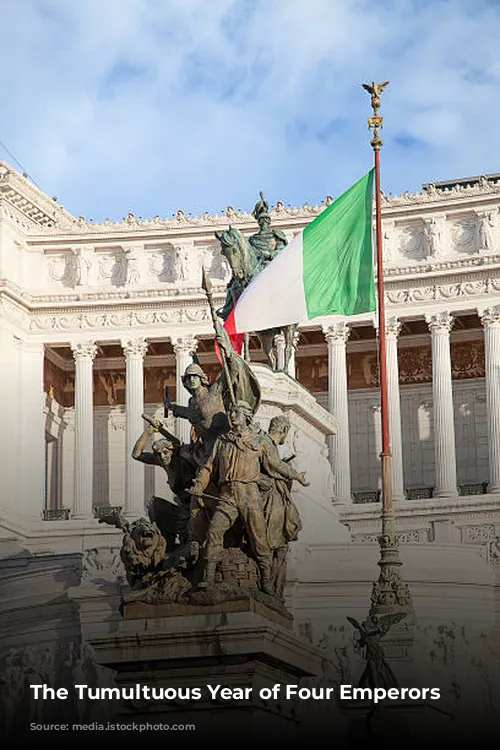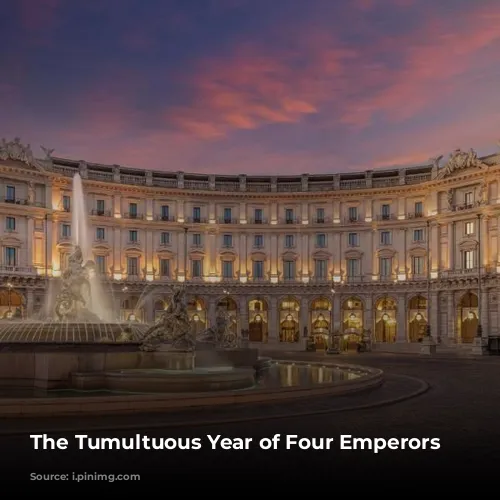Imagine Rome in the year 68 AD. The city is in chaos, the air thick with fear and uncertainty. The emperor, Nero, is dead, and a deadly power struggle has erupted, leaving the empire teetering on the brink of collapse.
This period of brutal civil war, known as the Year of the Four Emperors, saw four men rise and fall from power in just eighteen months. This tumultuous time was a testament to the fragility of the Roman Empire’s political system and its vulnerability to internal conflict.
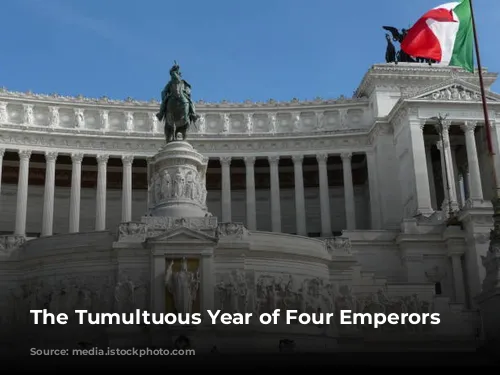
The Fall of Nero and the Rise of Galba
Nero, the last emperor of the Julio-Claudian dynasty, had been a controversial figure. His reign was marked by extravagance, cruelty, and a disregard for the welfare of the Roman people. He was accused of heinous crimes, including the murder of his own mother and wives. His excessive spending had driven the empire into financial ruin. Following the devastating Great Fire of Rome in AD 64, Nero was accused of prioritizing his own luxury palace over the needs of his people.
By AD 68, the people had reached their breaking point. The revolt of Gaius Julius Vindex, the governor of Gallia Lugdunensis, in March AD 68, was the final straw. Vindex, along with the governor of Hispania Tarraconensis, Servius Sulpicius Galba, had openly challenged Nero’s authority. Both men had reportedly been marked for execution by the emperor, forcing them to act in self-defense.
Nero, faced with mounting rebellion, fled Rome in disguise. However, his escape route was blocked by approaching enemies. In a final act of desperation, Nero asked his slave, Epaphroditos, to end his life.
Nero’s death on June 9, AD 68, created a power vacuum. The Roman Empire was left without a clear successor, plunging the nation into a chaotic scramble for control.
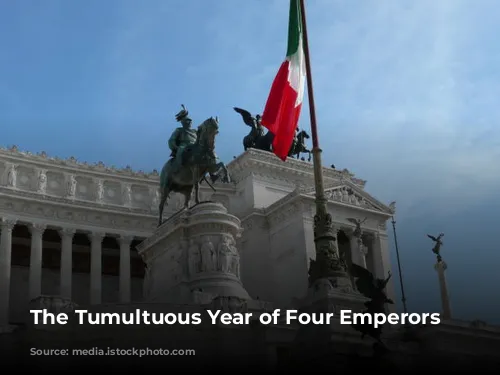
The Brief Reigns of Galba and Otho
With Nero gone, the Senate, the governing body of Roman nobles, was tasked with choosing a new emperor. Galba, an experienced general, emerged as the leading candidate. He had already been proclaimed emperor by his soldiers before Nero’s death, and the Senate readily recognized his authority.
Galba’s ascension, however, was short-lived. His reign was marked by questionable decisions and unpopular policies. His troops plundered communities that didn’t recognize him as emperor, generating widespread animosity. He also angered the Praetorian Guard, the elite Roman military unit, by refusing to pay them the promised reward for their support.
This discontent provided an opportunity for Marcus Salvius Otho, a former governor of Lusitania. Otho had been a loyal supporter of Galba but was bitter over being passed over for the position of heir. Bribing the Praetorian Guard, Otho seized control of Rome, ending Galba’s six-month reign in a bloody coup.
Otho’s reign was equally brief. He had barely established himself on the throne when Vitellius, declared emperor by the Rhine legions, marched on Rome. Otho, unable to defeat Vitellius’ advancing forces, took his own life to avoid a protracted civil war.
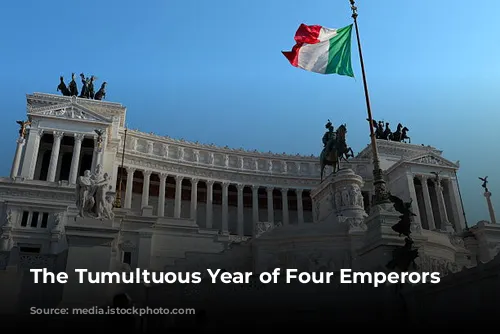
The Reign of Vitellius and the Rise of Vespasian
Vitellius, proclaimed emperor by the Senate in April AD 69, quickly proved to be an unpopular leader. He indulged in lavish banquets and extravagant displays of wealth, draining the already depleted Roman treasury. His actions were seen as a violation of Roman traditions, and his legions caused widespread chaos and destruction during their march to Rome.
However, the Senate welcomed Vitellius’ hands-off approach to politics. He allowed them considerable autonomy, providing a welcome respite from the tyranny of Nero and the instability of the previous emperors.
Meanwhile, in Judea, Vespasian, the governor of the region, was engaged in quelling a Jewish rebellion. News of Nero’s death and the subsequent chaos in Rome presented Vespasian with a chance to seize power.
Vespasian’s armies, led by Marcus Antonius Primus, marched on Rome. They engaged Vitellius’ forces at the Battle of Cremona, where a decisive victory for Vespasian’s troops marked the beginning of the end for Vitellius.
Following a bloody siege, Vitellius was captured and killed. Vespasian, who had been in Egypt securing grain supplies, returned to Rome and was declared emperor, bringing an end to the Year of the Four Emperors.
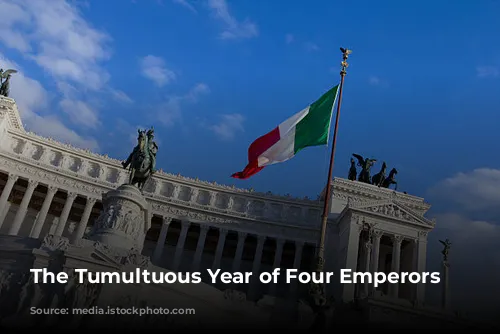
The Legacy of the Year of the Four Emperors
The Year of the Four Emperors was a dark chapter in Roman history. It exposed the empire’s vulnerability to internal conflict and its precarious reliance on the loyalty of its armies.
However, it also marked the rise of a new dynasty. Vespasian, the founder of the Flavian dynasty, proved to be a capable leader, restoring order and stability to the empire.
The Year of the Four Emperors remains a powerful reminder of the fragility of power and the consequences of ambition. It serves as a cautionary tale of the dangers of unchecked ambition and the importance of unity and stability in times of crisis.
